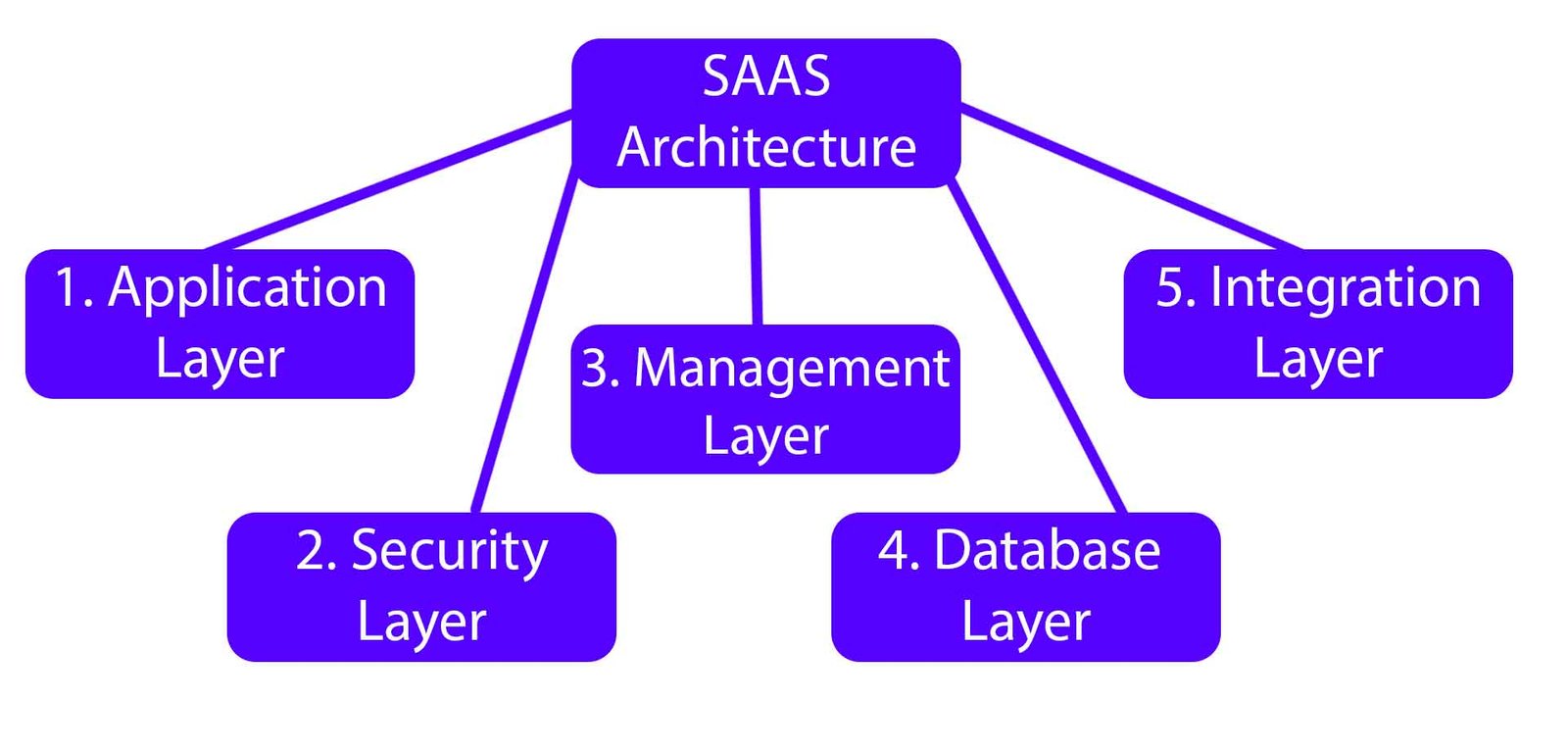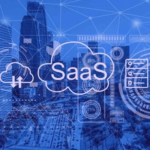Software as a Service (SaaS) has emerged as a pivotal model for delivering software solutions that are scalable, efficient, and flexible. For tech entrepreneurs, cloud engineers, and software developers, understanding SaaS architecture is not just a trend it’s a necessity.
This article provides a deep dive into the core components of SaaS architecture, its evolution from traditional models, and the future direction of this cloud-based approach.
What is SaaS Architecture?

At its core, SaaS architecture is about delivering software over the Internet without requiring local installation. This model is designed to be scalable, resilient, and elastic, making it ideal for cloud-native solutions. Let’s break down its essential layers:
Application Layer
The application layer is what users interact with. Built using modern web technologies like HTML5, and JavaScript, and frameworks like React or Angular, it ensures a responsive and engaging user experience. Features are often managed by microservices, allowing independent deployment and scaling, supported by containerization technologies such as Docker and Kubernetes.
Security Layer
Given the online nature of SaaS applications, robust security is crucial. This layer employs data encryption, multi-factor authentication (MFA), and role-based access control (RBAC) to secure sensitive information. The use of TLS for encrypted communication and token-based authentication mechanisms like OAuth further enhances security.
Management Layer
Here, administrative tasks such as user management, subscription tracking, and analytics come together. Integration of billing APIs and usage-based metering supports various subscription models, while automated scaling policies handle demand fluctuations smoothly.
Database Layer
SaaS databases are often multi-tenant, securely storing data from multiple clients in a shared environment. Techniques like sharding and partitioning optimize availability and fault tolerance. Combining NoSQL databases like MongoDB with SQL systems like PostgreSQL helps balance performance and scalability.
Integration Layer
SaaS platforms seldom operate in isolation. The integration layer facilitates seamless connectivity to external systems via RESTful APIs, webhooks, and GraphQL interfaces, promoting interoperability and extensibility.

Shift from On-Premise to SaaS
The shift from on-premise software to SaaS represents a paradigm shift in software delivery. Traditional enterprise software required significant investment in hardware and IT personnel. In contrast, SaaS introduces multi-tenancy, allowing multiple customers to share a single software instance while maintaining data isolation.
This transition is further supported by containerization and serverless computing, allowing dynamic scaling and improved resource efficiency.
Advantages of SaaS Architecture
For cloud engineers and developers, SaaS architecture offers several strategic advantages:
- Cost Optimization with Multi-Tenancy: Shared resources minimize overhead, leading to cost-efficient operations.
- Elastic Scalability: SaaS systems can scale horizontally and vertically, adapting to usage peaks.
- Automatic Updates and Continuous Deployment: DevOps practices enable seamless updates, enhancing user experience without disruptions.
- Global Accessibility and Low Latency: Content delivery networks (CDNs) and edge computing reduce latency and improve user experience worldwide.
Challenges in SaaS Adoption
Despite its advantages, SaaS adoption comes with challenges:
- Latency and Downtime Risks: Connectivity dependencies can impact availability, mitigated by edge computing.
- Data Security and Compliance: Handling sensitive data requires stringent compliance and encryption protocols.
- Performance Overhead in Multi-Tenancy: Effective resource isolation is essential to prevent performance degradation.
Future Directions of SaaS Architecture
The future of SaaS lies in AI integration and enhanced customization:
- AI and ML for Predictive Insights: Machine learning enhances predictive analytics, optimizing business strategies.
- Customizable SaaS with Modular Architectures: Micro-frontend architectures allow UI customization without compromising system integrity.
- Improved Security with AI-driven Threat Detection: AI enhances real-time threat detection, bolstering security measures.
Conclusion
SaaS architecture is redefining software development and delivery, providing a flexible and scalable approach for modern business needs. From its core layers to future advancements, understanding SaaS architecture is essential for building robust and user-friendly cloud solutions. With continued advancements in cloud technology, the potential of SaaS will only continue to grow. So, as businesses look towards digital transformation and cloud-native approaches, having a deep understanding of SaaS architecture will be crucial for success in the industry.
Furthermore, it’s important to note that while SaaS offers many benefits and innovations, it is not a one-size-fits-all solution. Each business must carefully evaluate their needs and consider factors such as compliance requirements, data sensitivity, and performance before choosing to adopt a SaaS
Frequently Asked Questions (FAQs)
SaaS (Software as a Service) architecture is a method of delivering software applications over the Internet, eliminating the need for local installation. This architecture is designed to be scalable, resilient, and elastic, making it ideal for cloud-native solutions.
Multi-tenancy allows multiple customers to share a single software instance while maintaining data isolation. This approach minimizes overhead, leading to cost-efficient operations by sharing resources.
Security in SaaS architecture is ensured through data encryption, multi-factor authentication (MFA), role-based access control (RBAC), token-based authentication mechanisms like OAuth, and the use of TLS for encrypted communication.
SaaS systems handle scalability through horizontal and vertical scaling. Containerization and serverless computing enhance dynamic scaling, allowing resources to adjust according to demand.
Challenges in adopting SaaS include latency and downtime risks due to connectivity dependencies, stringent data security and compliance requirements, and performance overhead in multi-tenancy environments that demand effective resource isolation.
Future advancements in SaaS architecture include AI and machine learning for predictive insights, customizable SaaS with modular architectures, and improved security with AI-driven threat detection.
Businesses must evaluate their specific needs, considering factors such as compliance requirements, data sensitivity, and performance demands. Assessing these factors helps determine if adopting SaaS will meet their operational and strategic goals.





